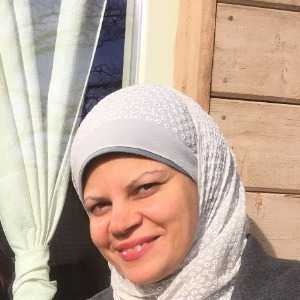Nov 19, 2020
TaqMan qPCR assay for detecting Batrachochytrium dendrobatidis (Bd)
- Omneya Osman1,
- Mats Töpel1,
- Tomas Larsson1,
- Alexander Eiler1
- 1eDNA solutions

Protocol Citation: Omneya Osman, Mats Töpel, Tomas Larsson, Alexander Eiler 2020. TaqMan qPCR assay for detecting Batrachochytrium dendrobatidis (Bd). protocols.io https://dx.doi.org/10.17504/protocols.io.bn2zmgf6
Manuscript citation:
Boyle DG et al. (2004). Rapid quantitative detection of chytridiomycosis (Batrachochytrium dendrobatidis) in amphibian samples using real-time Taqman PCR assay. Dis Aquat Org 60133–139.
License: This is an open access protocol distributed under the terms of the Creative Commons Attribution License, which permits unrestricted use, distribution, and reproduction in any medium, provided the original author and source are credited
Protocol status: Working
We use this protocol and it's working
Created: October 27, 2020
Last Modified: November 19, 2020
Protocol Integer ID: 43833
Keywords: BD, qPCR, TaqMan probe
Abstract
The fungus Batrachochytrium dendrobatidis (Bd) was first detected in Norway in 2017, and thus indicate the arrival of an invasive black-listed species in the country. Here we report the details of real time PCR assay which was used to screen for B. dendrobatidis from water samples collected from different locations in Norway.
Guidelines
Laboratory work space and equipment were sterilised by UV-light and DNase solution and 70% ethanol. Filter pipet tips were used in all steps of the laboratory work.
Negative controls of DNase/RNase free water were used in each qPCR assay.
Materials
UltraPure™ DEPC-treated Water CATALOG NUMBER10813012
SsoAdvanced Universal Probes SupermixBio-rad LaboratoriesCatalog #172-5280
qPCR strip or qPCR plate
BioRad qPCR machine CFX96
Safety warnings
Handling high concentration of positive controls was performed in a post-PCR room which is physically separated from the pre-PCR room to avoid contamination.
Always add your samples first and seal them before adding the serial dilutions of positive control (standard) at the end.
DNA extraction
DNA extraction
3h 30m
3h 30m
DNA extraction was performed using Qiagen DNeasy power water sterivex kit. The quality of the extracted DNA was estimated using Nanodrop.
Qiagen DNeasy power water sterivex kit: https://www.qiagen.com/se/resources/resourcedetail?id=c5fe7d5f-070a-4ebe-ac04-4bbf05a13e91&lang=en
3h 30m
Real time PCR
Real time PCR
A primer set of ITS1-3 Chytr (5’- CCTTGATATAATACAGTGTGCCATATGTC-3 ́),
5.8S Chytr (5’- AGCCAAGAGATCCGTTGTCAAA-3’) and
probe Chytr MGB2 (FAM-5’ TTCGGGACGACCC-3’-NFQ- MGB) (Boyel et al. 2004).
SsoAdvanced Universal Probes Supermix: https://www.bio-rad.com/webroot/web/pdf/lsr/literature/bulletin-10023650.pdf
A serial dilution of 100, 50, 25, 10, 1, 0.1 and 0.01 genomic equivalents (GE) of the DNA extract of Bd standard was tested and 5 dilutions (100, 25, 10, 1, 0.1 GE) were used for the qPCR assay.
Pipette 5 μl of DNA template to reach 20 μl final volume in each well.
For negative controls use 5 μl of RNase/DNase free water.
30m
Real time PCR
Real time PCR
2h
2h
PCR master mix without internal control (IC)
| Reagent | Working sol | Final conc | Volume (µL) | |
| SsoAdvanced Universal Probes Supermix | 2x | 1x | 10 | |
| ITS1-3 Chytr | 10 uM | 0,9 µM | 1,8 | |
| 5.8S Chytr | 10 uM | 0,9 µM | 1,8 | |
| TaqMan probe | 10 uM | 0,25 µM | 0,5 | |
| DEPC-water | 0,9 | |||
| template | 5 | |||
| ∑ | 20 |
* Fluorogenic data should be collected during this step through the FAM channel.
1h 30m
PCR master mix with IC
| Working solution | Final concentration | Volume (µL) | ||
| SsoAdvanced Universal Probes Supermix | 2x | 1x | 12,5 | |
| ITS1-3 Chytr | 10 uM | 0,9 µM | 2,250 | |
| 5.8S Chytr | 10 uM | 0,9 µM | 2,250 | |
| TaqMan probe | 10 uM | 0,25 µM | 0,625 | |
| IC primer/probe | 1 | |||
| IC-DNA** | 0,5 | |||
| DEPC-water | 0,875 | |||
| template | 5 | |||
| ∑ | 25 |
* Fluorogenic data should be collected during this step through the VIC channel to detect IC and FAM to detect TaqMan probe.
** IC- DNA was diluted (1:20 dilution) before usage in the master mix.
1h 30m
PCR program
PCR program
2h
2h
| Step | Time | Temp (C ) | ||
| Enzyme activation | 2 min | 95 | ||
| Cycling x50 (step3 & 4) | Denaturation | 10 sec | 95 | |
| Extension and Data collection * | 1min | 60 |
2h
qPCR instrument
qPCR instrument
15m
15m
QPCR was performed on BioRad qPCR machine CFX96.
Analysis of the results was done by CFX maestro software
15m
Quantification cycle (Cq)
Positive control of 100 genome equivalent is expected to give a signal at Cq value 27.
In case of internal control, Cq values of 27±3 are within the normal range. A control sample with IC and water should be evaluated at each qPCR run.
